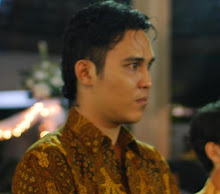The imagination of very wide, white-sand beach that enables you to see different angles of the beach will rise when you hear the mention of Wediombo (wedi=sand, ombo=wide) Beach. Nonetheless, Wediombo Beach actually does not have such wide spread of sands. The west and east parts of the beach are planked by coral hills so that the spread of the sands is not as wide as the one in Parangtritis, Glagah, and possibly Kuta beaches.
In fact, local people tell that the name of this beach that was given by the predecessors does not represent the real situation. Some people say that more appropriate name for this beach is Teluk Ombo (The Wide Bay), since the beach looks like a wide bay. There are two flanking coral hills with the seawater protrudes to the land but it is wider that common bays.
Apart from the inappropriate name, however, Wediombo still provides extraordinary beach view. The seawater looks clear blue; it is different from other beaches of which seawater looks greenish resulted from water pollution. The white sands with ornaments of the seashells are maintained well. The atmosphere of the beach is quiet so that it becomes the right place to get out of noisiness.
Wediombo is located in Jepitu village of Girisubo Sub-District in Gunung Kidul Regency. If you have come to Siung Beach, you will easily reach this beach. You only have to get back to a T-junction in Tepus before the road leading to Siung Beach, then turn right following the road until you get to a sign board asking you to turn right to get to Wediombo.
The location of this beach is far lower that the surrounding lands. You have to get down by the stairs in order to reach the beach and enjoy the panorama. While descending the stairs, you will be able to see the field, houses and mangrove vegetation on your left and right sides. Some people are seen carrying herbs for their cattle or taking care of the cattle in its stall.
In addition to the enchanting coastal panorama, Wediombo offers a unique tour experience, if not an extreme one, namely fishing from the height of the coral cliff. This kind of tour originating from the fishing habit of local people is popular with fishing hobbyists from Yogyakarta and Wonogiri. The main objective is, according to local people to YogYES, to catch big fish.
It is not easy to reach the fishing location at the top of the coral cliff. We have to walk eastwards through the shore; climbing steep and slippery cliff and sometimes the waves will hit us before arriving at the cliff that directly faces the deep ocean. For those who have been familiar with the route, it will take them one-hour walk.
The difficult way to the cliff, however, is paid well. Big fish are sometimes caught by the hobbyists. At least they will catch fish that local people name it panjo fish. The fish of which size is as big as man's arm are of two kinds, the cylindrical one that exist more during dry season and the flat one during the rainy season.
The baits are small fish that can even be collected at the seashore. We can use either fishing pole or fishnet to catch the small fish. It's cheap and easy, isn't it?
For those who do not dare to get to the top of the cliff, they might just buy the fish they the fishermen catch. They sell the panjo fish at IDR 3,000 one fish, or IDR 20,000 for a string of fish containing 5-6 fish. Some local people are willing to cook them for you if you wish. Otherwise, you can take them home as a gift for your family.
Cooked panjo fish are also available. Served with rice and condiment from chili pepper, fried Panjo fish is sold at IDR 7,000 only. The rice is served in the traditional container called bakul and the condiment is on traditional saucer called cobek. The portion is big enough for two persons. YogYES tried this menu in a warong located close to the parking area. Fried sea urchin that tastes like fried chicken is also available if you want to try.
At certain occasions, you can see Ngalangi ceremony that is held by local people. This ceremony takes place once in a year, just like the labuhan besar ceremony, of which objective is to express the gratitude to God for what have been granted and asking for good fortune for the future. The fortune is mainly good catches in sufficient quantity to fulfill daily needs.
The procession of the ceremony is unique; it begins by spreading gawar - the fishnet made from wawar tree. This kind of fishnet was used to catch fish before the present nylon fishnet. The gawar is spread out from Kedongkowok hill to the area of the rise and fall of the tides in order to trap the fish that are washed away by the waves and that cannot get back to the sea.
When seawater falls, the fish are collected. People are then busy cleaning and cooking the fish. Some of the fish are returned to the sea with some rice ans offerings. Most part of the dish is shared to the families. This ceremony is known as kenduri besar or great shared-meals as the form of local wisdom that fish are livelihood for all people.
In addition to Ngalangi ceremony, the enchantment of the beach can be enjoyed everyday. The entrance fee is only IDR 5,000 for two persons. If you want to spend the night and gather with some of your friends, you can use a small hut located close to the warongs alongside the beach. It is so refreshing to be in this beach.

No comments:
Post a Comment